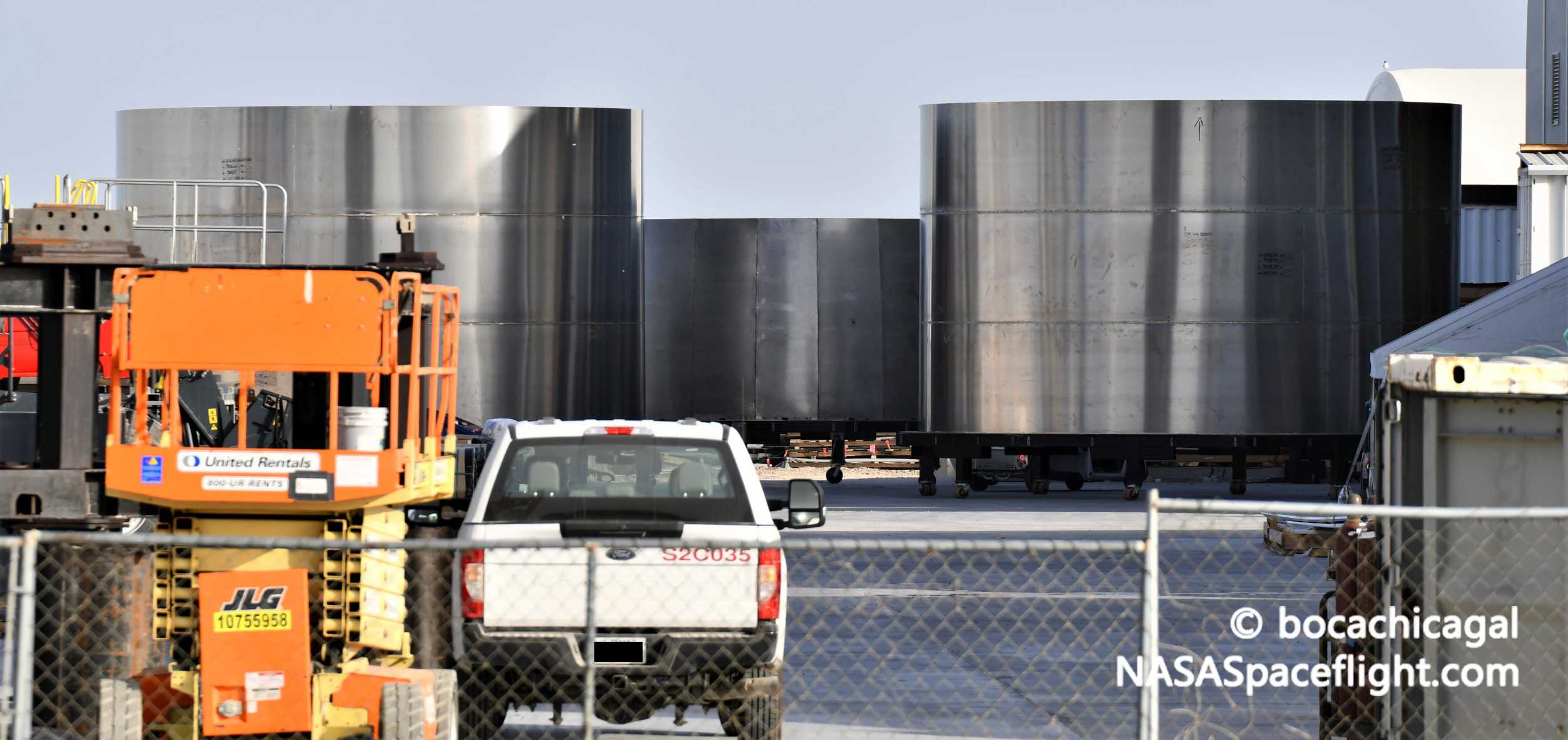
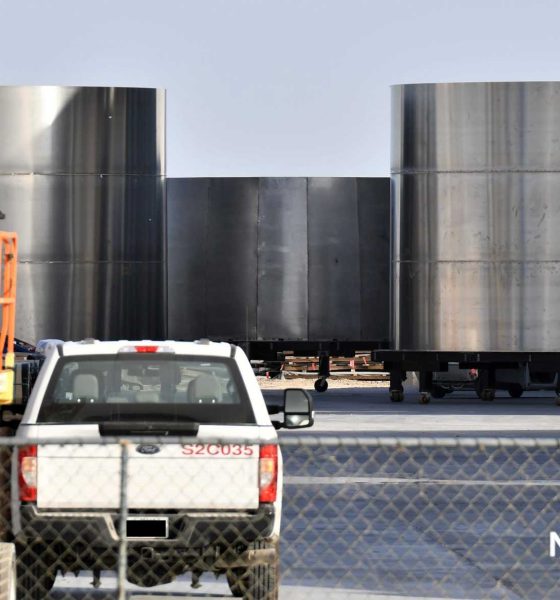
News
SpaceX begins building upgraded Starship prototype
A Starship part spotted on July 20th confirms that SpaceX is already well into the process of building a significantly upgraded full-scale prototype.
Following in the footsteps of five or six full-scale ships before it, information published by NASASpaceflight.com suggests that Starship SN8 will be a substantial departure from its predecessors. Thanks to data gathered by testing the Starship SN7 test tank to destruction on June 24th, SpaceX has determined that a different alloy – known as 304L – is superior to the 301 stainless steel all Starship prototypes have been built out of up to now.
SN8 is SpaceX’s response to that discovery. As usual, the company has performed smaller tests before deciding to build a full-scale Starship prototype – identical to all previous SNx prototypes beyond the alloy change – out of 304L stainless steel. As a result, Starship SN8 – once complete – may have the most potential of any prototype built thus far, but its fate will also be more uncertain than most of its predecessors.

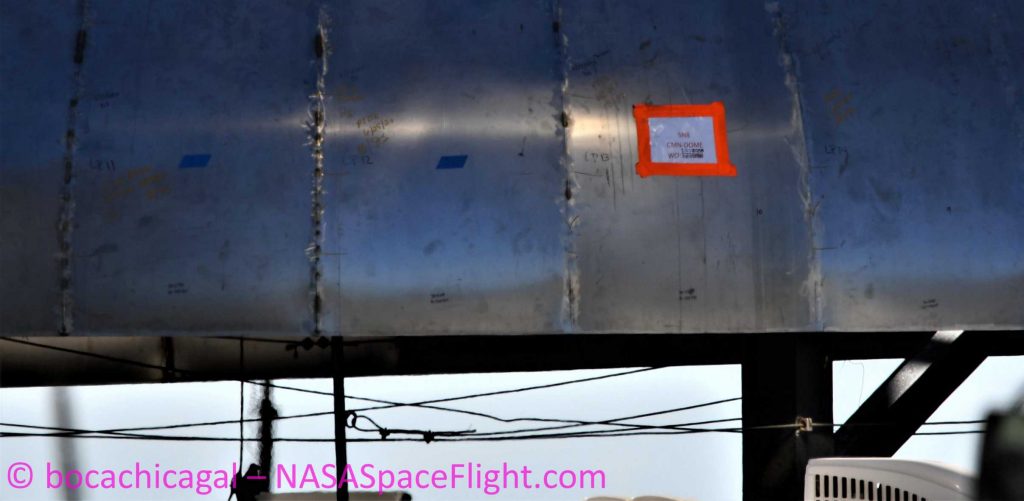
On June 24th, SpaceX destroyed the SN7 Starship test tank as part of a controlled cryogenic proof test – essentially a pressure test at cryogenic (ultra-cold) temperatures. Departing from routine, CEO Elon Musk never commented on the test, leaving its results shrouded in mystery. According to NASASpaceflight, however, SN7 “achieved a record pressure before it failed.”
Designed to test a different formulation of stainless steel, that success implies that SN7 proved that the 304L alloy will not only be more malleable and forgiving at cryogenic temperatures – but is also more capable overall compared to 301 steel. To beat the record set by the second or third Starship test tank in January or March 2020, SN7 would have had to reach pressures of ~8.6 bar or higher – effectively icing on the cake for the already-demonstrated ~140% safety factor.
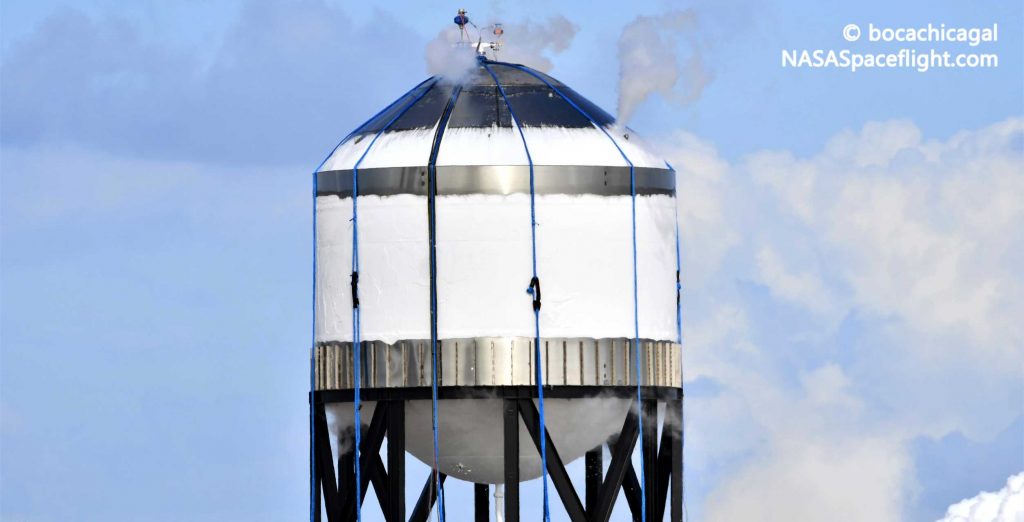
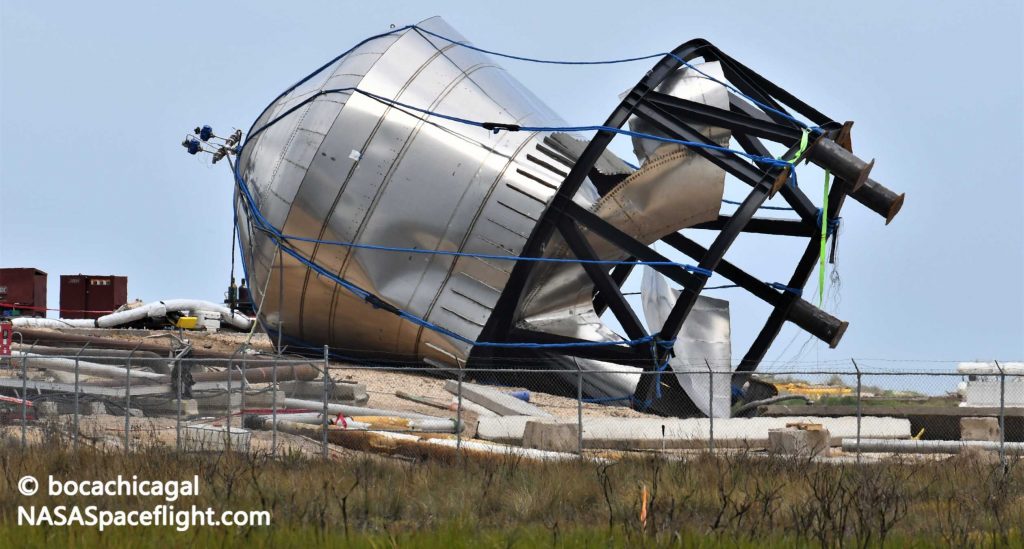
A full-scale Starship has yet to survive proof tests at those pressures but Starship SN4 did become the first to complete a full cryo proof, sustaining ~7.5 bar (~110 psi) before it was safely depressurized. Currently on the pad and preparing for an imminent static fire and hop test debut, Starship SN5 is unlikely to put pressure on that record unless that it aces both of the aforementioned trials. Built entirely out of the 304L alloy already proven to be superior to 301, SN8 may well be the golden goose of prototypes.
“The vehicle will feature major upgrades over previous Starship prototypes. SN8 will be built out of 304L stainless steel versus 301 and will receive a fairing, aerosurfaces, and three Raptor engines to allow for a higher-altitude test flight.”
NASASpaceflight.com — July 15th, 2020
The appearance of SN8’s labeled common dome – the dome separating Starship’s liquid oxygen and methane tanks – implies that a variety of other parts spotted over the last few days are also meant for the next full-scale rocket. Mounted on a stand purpose-built for the task, the SN8 common dome will soon be ‘sleeved’ by one or several stacked steel rings, after which it can be welded to the rest of the Starship’s tank. An engine section and thrust structure – likely SN8’s – in the late stages of assembly was spotted three days prior, while an upper tank dome that could be for either SN8 or test tank SN7.1 was captured in the same photos.
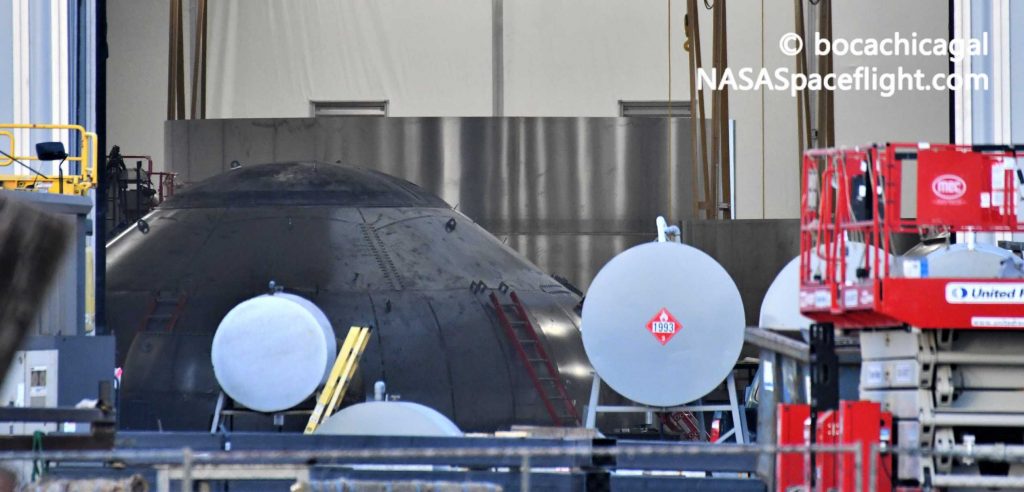
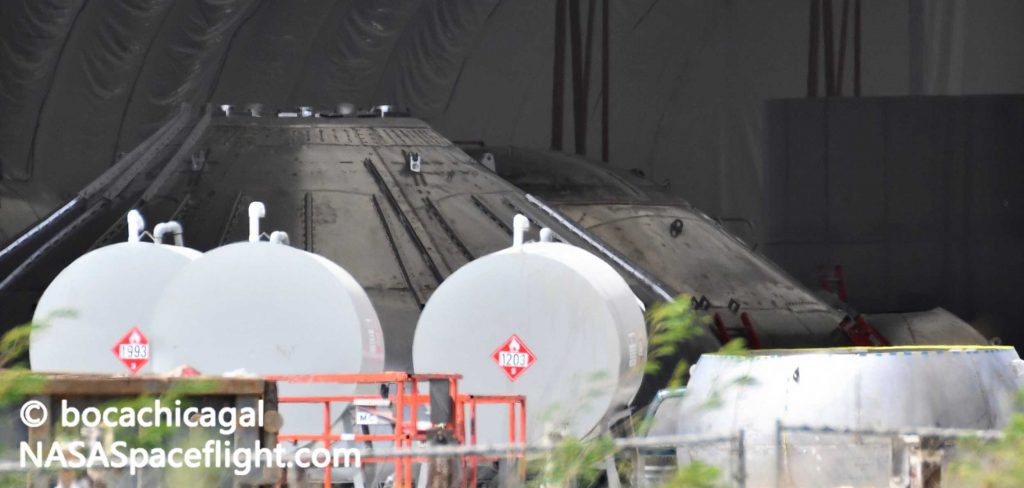

In the last photo, taken on July 13th, there’s even signs of what could be Starship SN9 – hinted at by the appearance of two Starship engine sections signified by the pattern of welds on their exteriors. Those welds are incontrovertible signs of the stringers used to strengthen Starship engine sections and they haven’t been used anywhere else on past prototypes.
Based on the sheer number of steel rings and domes currently floating around SpaceX’s Boca Chica, Texas Starship factory, SN8 could be a just a week – or even less – away from final stacking operations. If SN5 leaves the pad intact and completes its wet dress rehearsal, static fire, and flight debut without issue, SN8 could be up to bat much sooner than later.
Check out Teslarati’s Marketplace! We offer Tesla accessories, including for the Tesla Cybertruck and Tesla Model 3.

News
Tesla starts showing how FSD will change lives in Europe
Local officials tested the system on narrow country roads and were impressed by FSD’s smooth, human-like driving, with some calling the service a game-changer for everyday life in areas that are far from urban centers.

Tesla has launched Europe’s first public shuttle service using Full Self-Driving (Supervised) in the rural Eifelkreis Bitburg-Prüm region of Germany, demonstrating how the technology can restore independence and mobility for people who struggle with limited transport options.
Local officials tested the system on narrow country roads and were impressed by FSD’s smooth, human-like driving, with some calling the service a game-changer for everyday life in areas that are far from urban centers.
Officials see real impact on rural residents
Arzfeld Mayor Johannes Kuhl and District Administrator Andreas Kruppert personally tested the Tesla shuttle service. This allowed them to see just how well FSD navigated winding lanes and rural roads confidently. Kruppert said, “Autonomous driving sounds like science fiction to many, but we simply see here that it works totally well in rural regions too.” Kuhl, for his part, also noted that FSD “feels like a very experienced driver.”
The pilot complements the area’s “Citizen Bus” program, which provides on-demand rides for elderly residents who can no longer drive themselves. Tesla Europe shared a video of a demonstration of the service, highlighting how FSD gives people their freedom back, even in places where public transport is not as prevalent.
What the Ministry for Economic Affairs and Transport says
Rhineland-Palatinate’s Minister Daniela Schmitt supported the project, praising the collaboration that made this “first of its kind in Europe” possible. As per the ministry, the rural rollout for the service shows FSD’s potential beyond major cities, and it delivers tangible benefits like grocery runs, doctor visits, and social connections for isolated residents.
“Reliable and flexible mobility is especially vital in rural areas. With the launch of a shuttle service using self-driving vehicles (FSD supervised) by Tesla in the Eifelkreis Bitburg-Prüm, an innovative pilot project is now getting underway that complements local community bus services. It is the first project of its kind in Europe.
“The result is a real gain for rural mobility: greater accessibility, more flexibility and tangible benefits for everyday life. A strong signal for innovation, cooperation and future-oriented mobility beyond urban centers,” the ministry wrote in a LinkedIn post.
News
Tesla China quietly posts Robotaxi-related job listing
Tesla China is currently seeking a Low Voltage Electrical Engineer to work on circuit board design for the company’s autonomous vehicles.

Tesla has posted a new job listing in Shanghai explicitly tied to its Robotaxi program, fueling speculation that the company is preparing to launch its dedicated autonomous ride-hailing service in China.
As noted in the listing, Tesla China is currently seeking a Low Voltage Electrical Engineer to work on circuit board design for the company’s autonomous vehicles.
Robotaxi-specific role
The listing, which was shared on social media platform X by industry watcher @tslaming, suggested that Tesla China is looking to fill the role urgently. The job listing itself specifically mentions that the person hired for the role will be working on the Low Voltage Hardware team, which would design the circuit boards that would serve as the nervous system of the Robotaxi.
Key tasks for the role, as indicated in the job listing, include collaboration with PCB layout, firmware, mechanical, program management, and validation teams, among other responsibilities. The role is based in Shanghai.
China Robotaxi launch
China represents a massive potential market for robotaxis, with its dense urban centers and supportive policies in select cities. Tesla has limited permission to roll out FSD in the country, though despite this, its vehicles have been hailed as among the best in the market when it comes to autonomous features. So far, at least, it appears that China supports Tesla’s FSD and Robotaxi rollout.
This was hinted at in November, when Tesla brought the Cybercab to the 8th China International Import Expo (CIIE) in Shanghai, marking the first time that the autonomous two-seater was brought to the Asia-Pacific region. The vehicle, despite not having a release date in China, received a significant amount of interest among the event’s attendees.
Elon Musk
Elon Musk and Tesla AI Director share insights after empty driver seat Robotaxi rides
The executives’ unoccupied tests hint at the rapid progress of Tesla’s unsupervised Robotaxi efforts.

Tesla CEO Elon Musk and AI Director Ashok Elluswamy celebrated Christmas Eve by sharing personal experiences with Robotaxi vehicles that had no safety monitor or occupant in the driver’s seat. Musk described the system’s “perfect driving” around Austin, while Elluswamy posted video from the back seat, calling it “an amazing experience.”
The executives’ unoccupied tests hint at the rapid progress of Tesla’s unsupervised Robotaxi efforts.
Elon and Ashok’s firsthand Robotaxi insights
Prior to Musk and the Tesla AI Director’s posts, sightings of unmanned Teslas navigating public roads were widely shared on social media. One such vehicle was spotted in Austin, Texas, which Elon Musk acknowleged by stating that “Testing is underway with no occupants in the car.”
Based on his Christmas Eve post, Musk seemed to have tested an unmanned Tesla himself. “A Tesla with no safety monitor in the car and me sitting in the passenger seat took me all around Austin on Sunday with perfect driving,” Musk wrote in his post.
Elluswamy responded with a 2-minute video showing himself in the rear of an unmanned Tesla. The video featured the vehicle’s empty front seats, as well as its smooth handling through real-world traffic. He captioned his video with the words, “It’s an amazing experience!”
Towards Unsupervised operations
During an xAI Hackathon earlier this month, Elon Musk mentioned that Tesla owed be removing Safety Monitors from its Robotaxis in Austin in just three weeks. “Unsupervised is pretty much solved at this point. So there will be Tesla Robotaxis operating in Austin with no one in them. Not even anyone in the passenger seat in about three weeks,” he said. Musk echoed similar estimates at the 2025 Annual Shareholder Meeting and the Q3 2025 earnings call.
Considering the insights that were posted Musk and Elluswamy, it does appear that Tesla is working hard towards operating its Robotaxis with no safety monitors. This is quite impressive considering that the service was launched just earlier this year.








